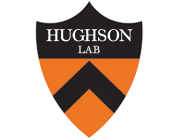The Vibrio cholerae quorum-sensing autoinducer CAI-1: analysis of the biosynthetic enzyme CqsA.
Type
Vibrio cholerae, the bacterium that causes the disease cholera, controls virulence factor production and biofilm development in response to two extracellular quorum-sensing molecules, called autoinducers. The strongest autoinducer, called CAI-1 (for cholera autoinducer-1), was previously identified as (S)-3-hydroxytridecan-4-one. Biosynthesis of CAI-1 requires the enzyme CqsA. Here, we determine the CqsA reaction mechanism, identify the CqsA substrates as (S)-2-aminobutyrate and decanoyl coenzyme A, and demonstrate that the product of the reaction is 3-aminotridecan-4-one, dubbed amino-CAI-1. CqsA produces amino-CAI-1 by a pyridoxal phosphate-dependent acyl-CoA transferase reaction. Amino-CAI-1 is converted to CAI-1 in a subsequent step via a CqsA-independent mechanism. Consistent with this, we find cells release > or =100 times more CAI-1 than amino-CAI-1. Nonetheless, V. cholerae responds to amino-CAI-1 as well as CAI-1, whereas other CAI-1 variants do not elicit a quorum-sensing response. Thus, both CAI-1 and amino-CAI-1 have potential as lead molecules in the development of an anticholera treatment.

